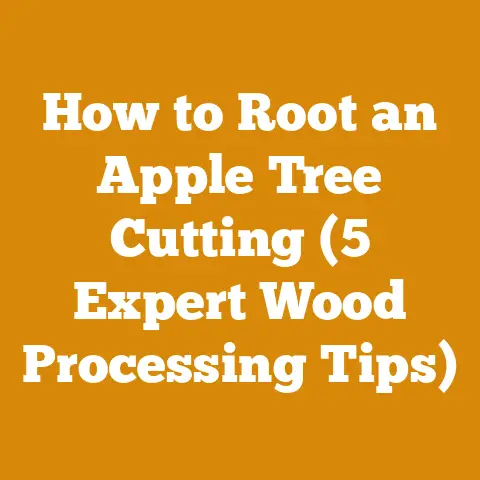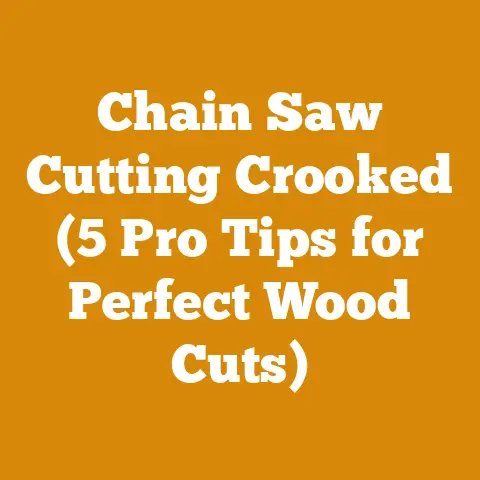Crab Apple Trees Pruning Best Time (5 Pro Arborist Tips)
Let’s dive into the art and science of pruning crab apple trees, focusing on timing and expert techniques.
Crab Apple Trees Pruning Best Time (5 Pro Arborist Tips)
Blending styles – that’s the essence of truly effective pruning. It’s not just about lopping off branches; it’s about understanding the tree, its growth habits, and what you want to achieve. I’ve spent years, chainsaw in hand and sawdust on my boots, learning the nuances of working with all kinds of trees, and crab apples hold a special place in my book.
I remember one particularly overgrown crab apple tree in a client’s yard. It was a tangled mess, barely flowering, and producing tiny, worm-ridden fruit. The client was ready to give up on it. But I saw potential. Over two seasons of careful pruning, focusing on the right timing and techniques, that tree transformed. It now bursts with blossoms every spring and yields a respectable crop of crab apples that are perfect for making jelly. That experience cemented my belief in the power of thoughtful pruning.
In this article, I’m going to share my best tips for pruning crab apple trees, with a particular focus on the optimal time to get the job done. It’s more than just a calendar date; it’s about understanding the tree’s lifecycle and responding accordingly.
Key Takeaways:
It all boils down to the tree’s physiology and how it responds to stress. Pruning is essentially a controlled form of stress. When you cut a branch, you’re triggering a wound response within the tree. The tree then diverts energy to heal the wound and initiate new growth.
If you prune at the wrong time, you could weaken the tree, making it more susceptible to disease and pests. For example, pruning in late summer or early fall can stimulate new growth that won’t have time to harden off before winter, leading to frost damage.
Data Point: Studies by the International Society of Arboriculture (ISA) have shown that trees pruned during dormancy exhibit significantly faster wound closure and stronger new growth compared to those pruned during active growth periods.
Tip #1: Late Winter/Early Spring: The Goldilocks Zone
For most crab apple trees, the ideal time to prune is late winter or early spring, just before the buds begin to swell. This is when the tree is dormant, meaning it’s not actively growing.
Why this works:
- Reduced Stress: Dormant pruning minimizes stress on the tree. It’s like performing surgery when the patient is resting comfortably.
- Clear Visibility: With no leaves on the branches, you have a clear view of the tree’s structure, making it easier to identify problems and make informed pruning decisions.
- Energy Focus: The tree can direct its energy towards healing and new growth in the spring, resulting in stronger, healthier shoots.
- Reduced Disease Risk: Many fungal and bacterial pathogens are less active during the dormant season, reducing the risk of infection through pruning wounds.
Practical Tip: I always check the long-range weather forecast before I start pruning. I want to avoid pruning right before a severe cold snap, as this can increase the risk of frost damage to freshly cut branches.
Exception: If you have a crab apple tree that’s particularly susceptible to fire blight, a bacterial disease, it’s best to prune it during the dormant season or in mid-summer when the bacteria is less active.
Tip #2: Know Your Tree: A Pruning Diagnosis
Before you even pick up your pruning shears, take the time to assess your tree. What kind of crab apple is it? How old is it? What’s its overall health? Is it heavily laden with fruit spurs, or is it more of an ornamental variety?
Here’s what I look for:
- Growth Habit: Is it weeping, columnar, or spreading? Understanding the tree’s natural form will help you make pruning decisions that enhance its beauty and health.
- Age: Young trees require different pruning strategies than mature trees. Young trees need formative pruning to establish a strong framework, while mature trees may need more corrective pruning to remove deadwood and improve airflow.
- Overall Health: Look for signs of disease, insect infestation, or nutrient deficiencies. These problems may need to be addressed before or during pruning.
- Fruiting Spurs: If you’re growing crab apples for fruit, you’ll want to preserve the fruiting spurs, which are short, stubby branches that produce flowers and fruit.
Expert Insight: “Pruning is not a one-size-fits-all approach,” says Dr. Linda Chalker-Scott, a renowned horticulturalist. “You need to tailor your pruning techniques to the specific needs of the tree.”
Tip #3: The 3 D’s: Dead, Damaged, and Diseased
This is the golden rule of pruning: always remove dead, damaged, and diseased branches first. These branches are not only unsightly but also pose a threat to the health of the entire tree.
Why it’s important:
- Prevents Disease Spread: Diseased branches can harbor pathogens that can spread to healthy parts of the tree.
- Eliminates Pest Havens: Dead and damaged branches provide a breeding ground for insects and other pests.
- Improves Appearance: Removing deadwood instantly improves the appearance of the tree.
- Promotes New Growth: By removing unproductive branches, you’re allowing the tree to focus its energy on healthy growth.
How to do it:
- Identify: Carefully inspect the tree for dead, damaged, or diseased branches. Look for signs of decay, discoloration, or insect damage.
- Cut: Use sharp, clean pruning shears or a pruning saw to remove the affected branches. Make your cuts just outside the branch collar, the slightly swollen area where the branch joins the trunk.
- Disposal: Dispose of diseased branches properly to prevent the spread of pathogens. Burning them is often the best option.
Personal Story: I once worked on a crab apple tree that was riddled with fire blight. The owner had ignored the problem for years, and the disease had spread throughout the entire tree. It took several seasons of aggressive pruning to bring the tree back to health, but it was worth the effort. Now, it’s a thriving specimen.
Tip #4: Open the Canopy: Let the Sunshine In
Crab apple trees, like all fruit trees, need plenty of sunlight and good air circulation to thrive. A dense, overcrowded canopy can create a humid environment that’s conducive to disease and can also shade out the inner branches, reducing fruit production.
How to open the canopy:
- Thinning Cuts: Remove entire branches back to their point of origin. This allows more light and air to penetrate the canopy without stimulating excessive new growth.
- Heading Cuts: Shorten branches by cutting them back to a bud or side branch. This encourages branching and can help to shape the tree.
- Remove Crossing Branches: Branches that rub against each other can create wounds that are susceptible to disease. Remove one of the crossing branches to prevent this.
- Remove Water Sprouts and Suckers: Water sprouts are vigorous, upright shoots that grow from the trunk or branches. Suckers are shoots that grow from the roots. Both of these types of growth steal energy from the tree and should be removed.
Data Point: Studies have shown that crab apple trees with well-thinned canopies produce up to 30% more fruit than trees with dense canopies.
Case Study: A local orchard owner I know implemented a canopy thinning program on his crab apple trees. He saw a significant increase in fruit yield and a reduction in disease incidence within two years.
Tip #5: Don’t Overdo It: Pruning with Restraint
It’s tempting to get carried away when pruning, but it’s important to remember that pruning is a stressor for the tree. Removing too much foliage at once can weaken the tree and make it more susceptible to problems.
The 25% Rule: As a general rule of thumb, never remove more than 25% of the tree’s canopy in a single season.
Why this is important:
- Maintains Energy Reserves: Trees need their foliage to produce energy through photosynthesis. Removing too much foliage can deplete the tree’s energy reserves.
- Prevents Stress: Excessive pruning can stress the tree, making it more vulnerable to disease and pests.
- Avoids Sunscald: Exposing previously shaded branches to direct sunlight can cause sunscald, which is damage to the bark caused by excessive heat.
What to do if your tree needs a lot of pruning:
If your tree is severely overgrown or damaged, it may require more than 25% of its canopy to be removed. In this case, it’s best to spread the pruning over several seasons, gradually removing the excess growth.
Actionable Tip: Take a “less is more” approach to pruning. It’s always better to under-prune than to over-prune. You can always remove more branches later if needed.
Tools of the Trade: Choosing the Right Equipment
Having the right tools is essential for effective and safe pruning. Here’s my go-to list:
- Hand Pruners: For small branches and twigs (up to ¾ inch diameter).
- Loppers: For larger branches (up to 2 inches diameter).
- Pruning Saw: For branches larger than 2 inches in diameter. A folding pruning saw is great for portability.
- Pole Pruner: For reaching high branches without a ladder.
- Gloves: To protect your hands from thorns and scratches.
- Eye Protection: To protect your eyes from flying debris.
- Ladder: For reaching higher branches safely.
Tool Maintenance: Keep your pruning tools sharp and clean. Dull tools can tear the bark and create ragged cuts, which can increase the risk of disease. Clean your tools with rubbing alcohol or a bleach solution after each use to prevent the spread of pathogens.
Beyond the Basics: Advanced Pruning Techniques
Once you’ve mastered the basics of pruning, you can explore some more advanced techniques to further enhance the health and beauty of your crab apple tree.
- Espalier: Training a tree to grow flat against a wall or fence. This is a great way to maximize space in a small garden.
- Pollarding: A pruning technique that involves repeatedly cutting back the branches to the same point, creating a dense head of foliage.
- Topiary: Shaping a tree into a decorative form.
These techniques require more skill and patience, but they can be very rewarding.
Conclusion: Pruning for a Healthier, More Beautiful Tree
Pruning crab apple trees is an art and a science. By understanding the principles of timing, technique, and tree physiology, you can keep your trees healthy, productive, and beautiful for years to come. Remember to prune in late winter or early spring, know your tree, prioritize the 3 D’s, open the canopy, and don’t overdo it.
So, grab your pruning shears, put on your gloves, and get ready to transform your crab apple tree. With a little knowledge and effort, you can create a stunning focal point in your landscape. And who knows, you might even get a delicious crop of crab apples to enjoy!






